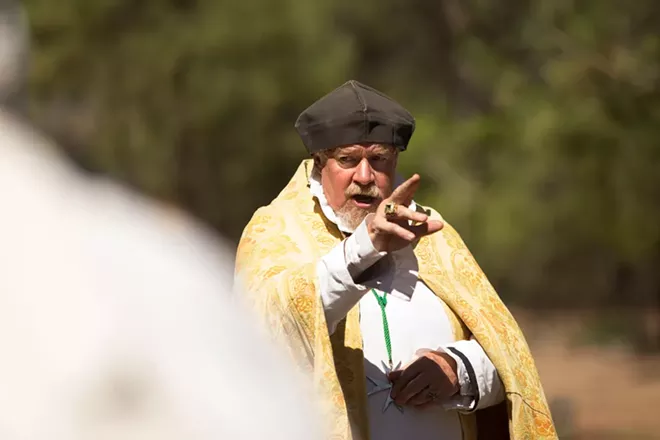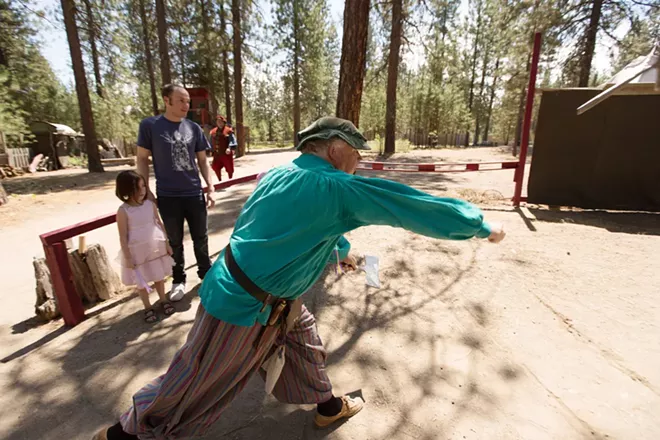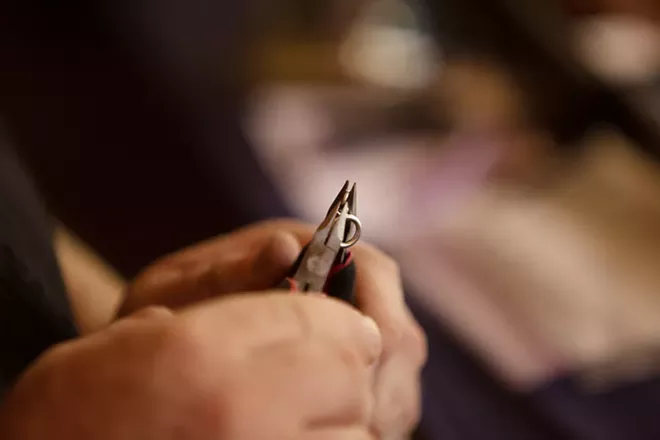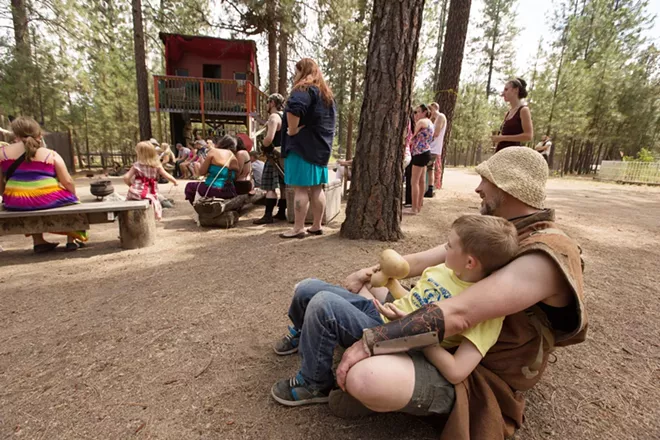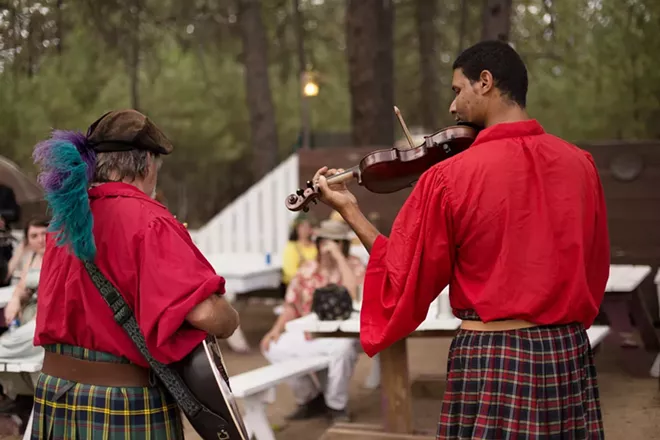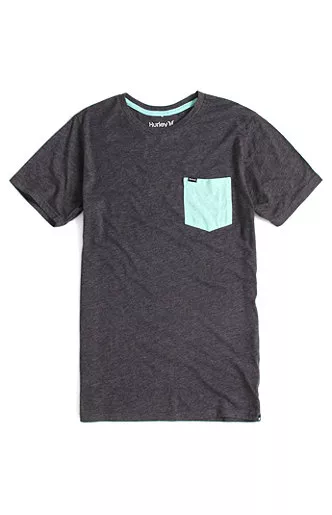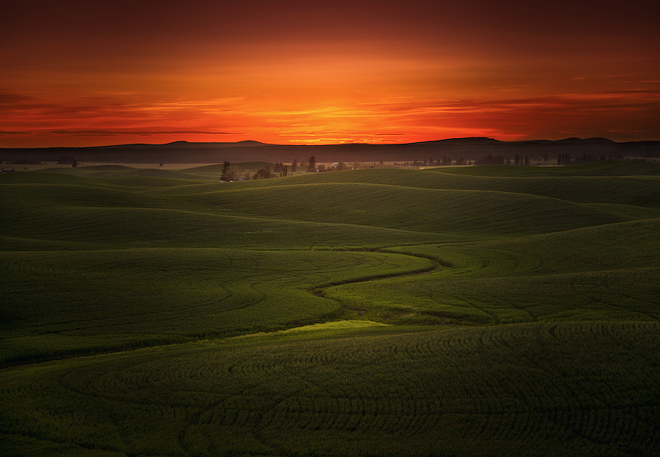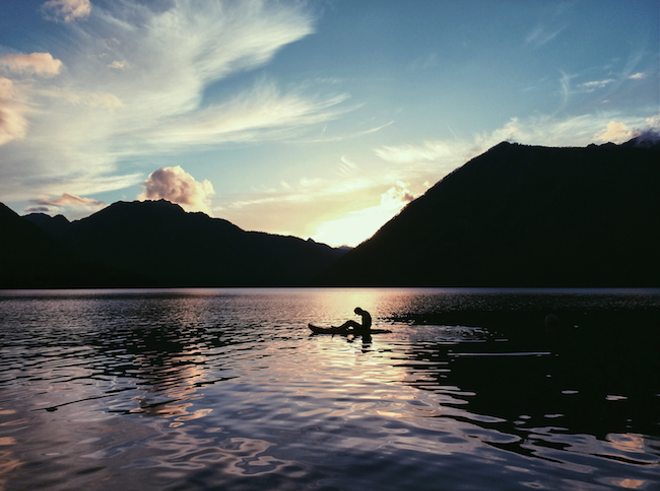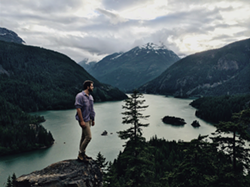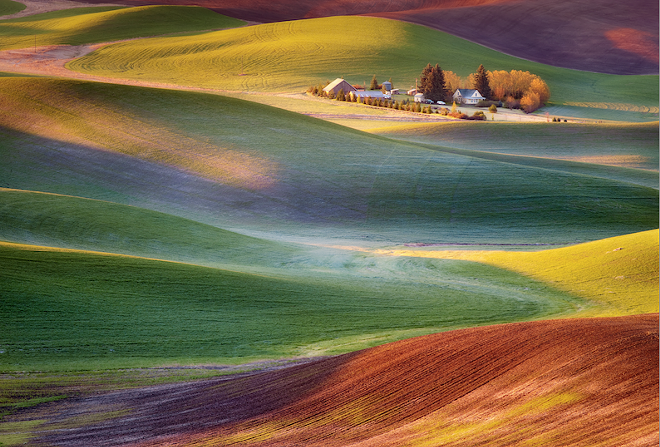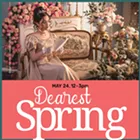Sunday, July 13, 2014
Here are some photos from Saturday's events:
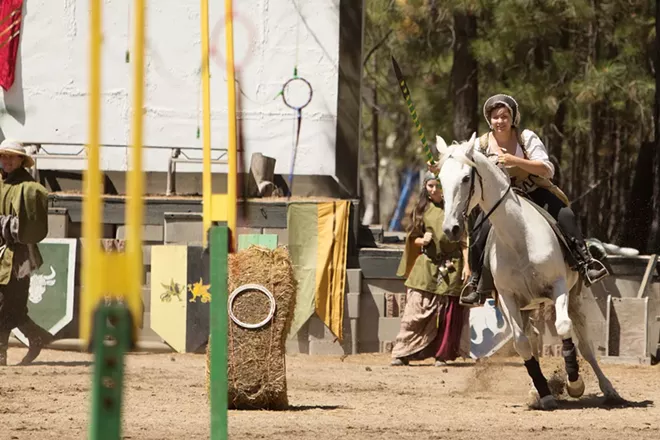
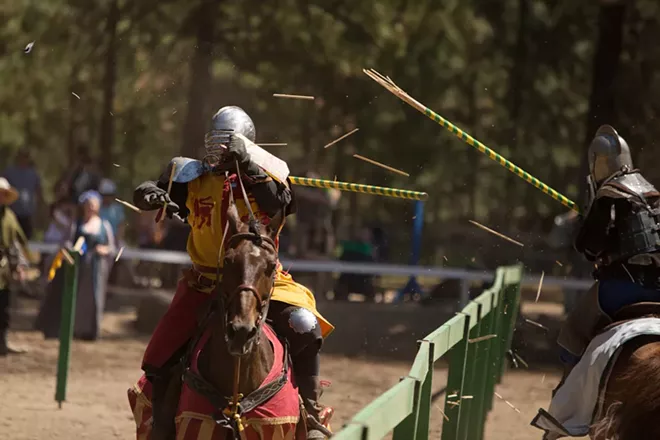

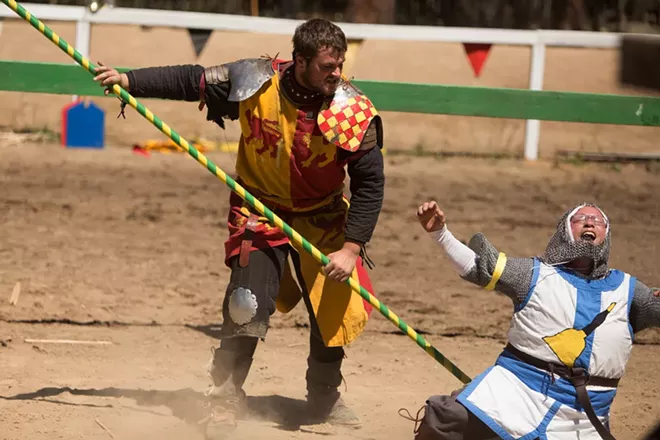
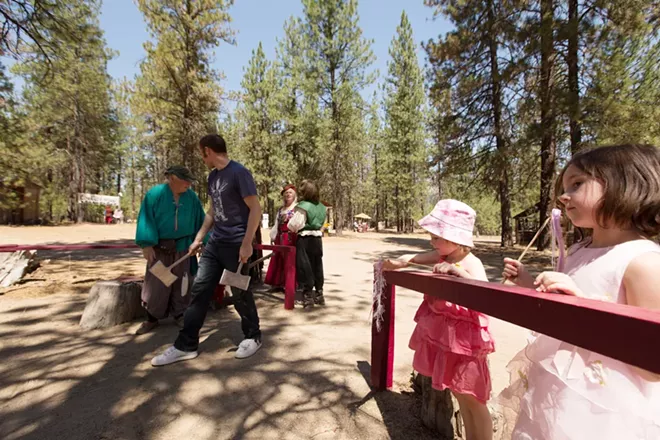

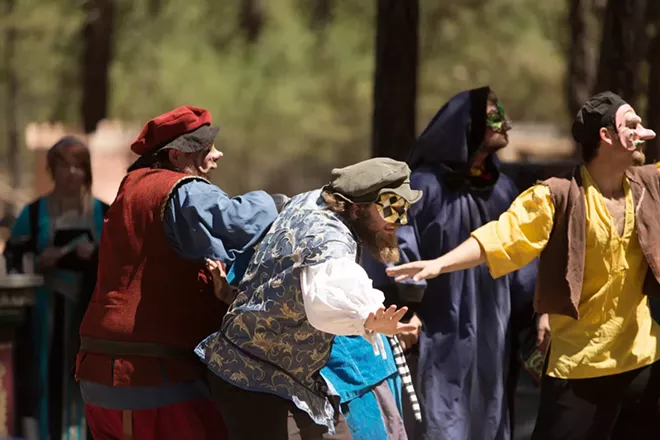




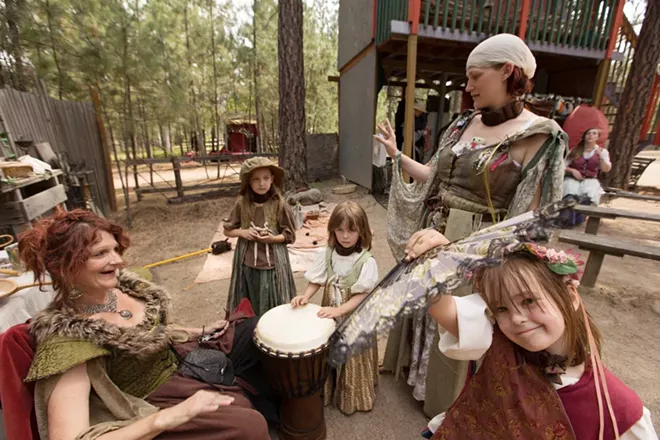
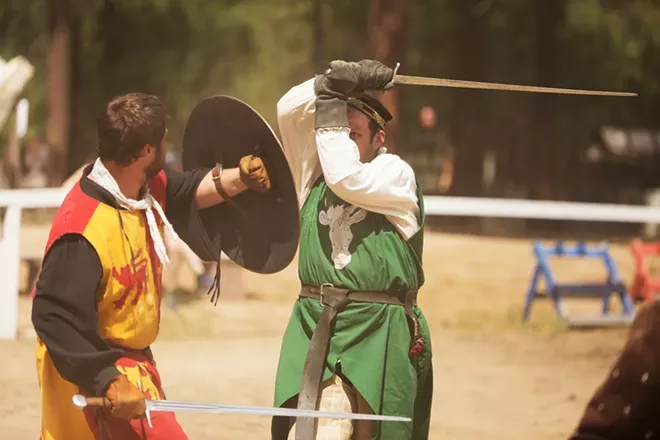

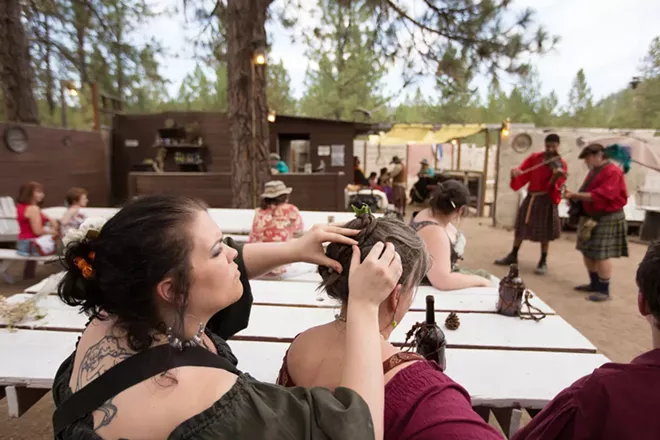
Tags: Photos , Culture , Northwest Renaissance Festival , Renaissance , Fair , Nine Mile Falls , Arts & Culture , Image
Friday, July 11, 2014
When you think of men’s summer fashion your mind might drift to thoughts of traditional jean shorts, bro-tanks or simple cotton T-shirts. Although some men rock these looks, we want to open your eyes to the variety of summer trends available for men to switch up or enhance your look.
We created our list of six trends based off of what we notice local men are wearing (see our six prominent summer trend picks for women here), check 'em out below.
1. Boat shoes
Boat shoes are a summer staple in men’s fashion, they are breezy and act as the middle ground shoe between sandals and tennis shoes. Sperry has created a new addition for their men’s line you might want to check out. The new line is called “Cloud Logo.” On the bottom of these shoes “Sperry TopSider” is creatively written and indented in the shoes so that when you walk in the sand your shoes imprint this pattern. The “Cloud Logo” shoes come in flip flops, tennis shoe style, traditional topsiders and new mesh topsiders. You can wear them with shorts, pants or even swimsuits.
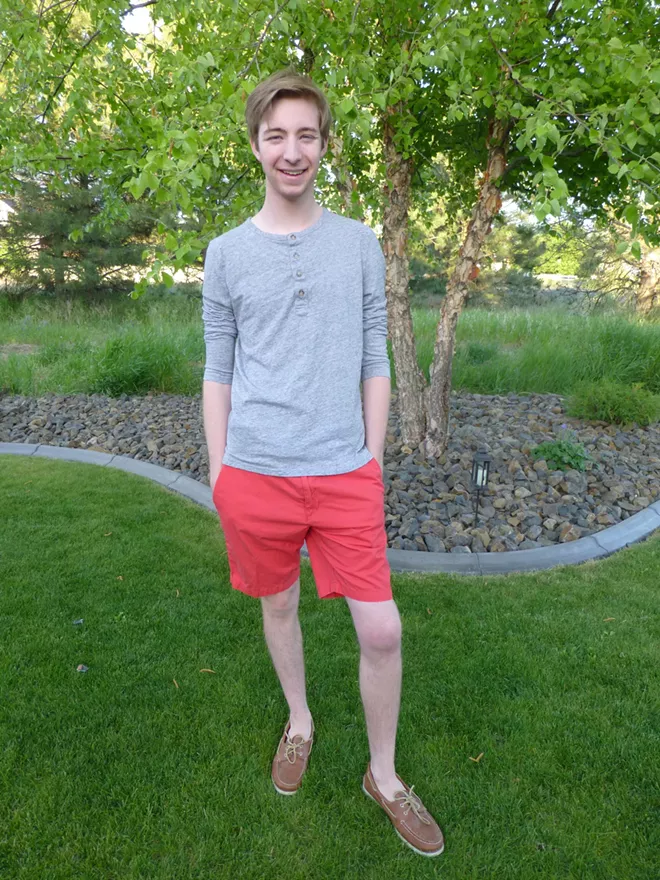
2. Colored laces
Colored shoelaces might sound a bit crazy, but you should give them a try. Stores are starting to sell Oxford style shoes with different colored laces. But if you want to ease your way into this trend, try switching out the laces on your favorite pair of shoes for a colored pair that matches or even clashes with your outfit to create a subtle statement.
3. Statement sunglasses
Sunglasses are an easy way to make an impact on your look. A few contemporary styles are the aviator and Ray-Ban looks. Though these styles have remained classic for years, men are revamping the look this summer by purchasing these traditional frames with colored lenses. Whether they are light blue, forest green or even mirrored, this simple switch adds a fresh perspective to these popular styles. These can be found at most stores for reasonable prices and worn with any look from swimsuits and flipflops to dress suits.
4. Colored pants and shorts
Solid colored pants and shorts are making a huge appearance this summer. Whether you choose red, blue, green or even salmon, these solid colored wardrobe pieces provide an easy way to bring personality to any outfit.

5. Summer suits
“Summer suits” does not necessarily mean you should wear traditional suits during the summer. It means you should break up the suit pieces you already own and wear them with outfits you normally wouldn’t. For example, try wearing your suit jacket with a light dress shirt and a pair of shorts and boat shoes. Or sport a pair of linen suit pants with dress shoes and a dress shirt. Summer is all about feeling light and breezy, and this look achieves that.
6. Tiffany blue colored clothing and accents
Tiffany blue is trending in both men and women’s fashion. It is the color of summer because it is bright, clean and reminds people of the ocean. Clothing pieces ranging from tennis shoes to T-shirts are starting to incorporate Tiffany blue accents. One way you can incorporate this accent color or others into your wardrobe is by purchasing T-shirts with pockets on the front. Most pockets incorporate patterns or accent colors.
Although there is not the same availability for men’s fashion to be found locally at boutiques or fashion trucks, this does not mean that men’s fashion is underrated.
As you continue to soak up the sunshine of summer, keep these trends in mind and remember to re-invigorate your personal style through subtle changes. As designer Ralph Lauren once said, “Fashion is not necessarily about labels. It’s not about brands. It’s about something else that comes from within you.”
Tags: Spokane fashion , Fashion Watch , men's fashion , Sperry , Culture , Shopping , Arts & Culture , Image
Tuesday, July 8, 2014
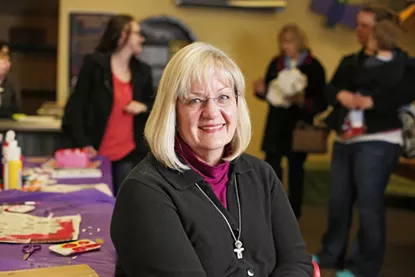
For more than a decade, the Tinman Gallery (811 W. Garland Ave.) has been an arts and culture business fixture in the Garland District, as well as to the greater Inland Northwest arts community, showcasing fine art by the region's top artists.
Yet all good things must come to an end, and yesterday Tinman Gallery owner and longtime arts supporter Susan Bradley announced that this month's is the last show and art sale at the gallery before she officially retires at the end of July. The gallery-wide sale, titled "Tinman's Greatest Hits," features artwork Bradley has collected over the past 11 years by the following artists: Harold Balazs, Mel McCuddin, Kay O'Rourke, Ric Gendron, Ken Spiering, Timothy Ely, Virginia Carter, Stan Miller, Marianne Figgins, Charlie Palmer, Ilse Tan, Len Heid, Kathleen Cavender, Scott Kolbo, Melissa Cole, Val Pate, Gay Waldman, Sheila Evans, George Flett, Kevin Red Star and Terrence Guardipee.
Bradley says it wasn't easy to decide to move on from the gallery, but she wants to spend more time with her husband who retired last October, and also plans to focus more on the four arts nonprofits for which she serves as board member: the Spokane Art School, MAC Foundation, Artist Trust and the Garland Business District.
"It's a difficult decision because I really loved helping the artists get their works out there," Bradley says. "I have really appreciated getting to know the artists and the people who came in to buy the art."
This morning marked the first day of the final show and sale, and already half a dozen pieces have been sold. Bradley estimates about 100 or so pieces she's bought for the Tinman's collection are offered for sale — artwork she personally doesn't have room to hold on to. Many of the artists included in the show aren't extensively producing and showing as they once were, so Bradley considers it a "last chance" for collectors to purchase their work.
Along with the artwork, the gallery's inventory of bestselling, art-related and children's books, handmade candles, greeting card and other gift items is on sale for 50 percent off original prices.
As far as the future of the Tinman Gallery space, located adjacent to the Spokane Art School's headquarters, Bradley says she'll announce its future planned use in the coming week.
"Tinman's Greatest Hits" started today, July 8, and continues through July 26. The gallery is open Tues-Fri, from 10 am-6 pm, and Sat, from 10 am-4 pm.
Tags: Tinman Gallery , Sue Bradley , Arts , Culture , Arts & Culture , Image
Monday, July 7, 2014
It's been a while since we took a look at some of the local projects on Kickstarter and other crowdfunding platforms. Here's a summer update.
A duo of local designers called PACT is raising money to create wallets, cases and satchels made of only USA-tanned leather. The laser-cut patterns are brought together right here in Spokane by a nontraditional fastening system. Rather than a logo, a PactMark — a rectangle with a pattern of filled and open circles unique to each customer — represents their commitment to individuality and minimalism.
This campaign launched last week and is already 14 percent of the way to the $50,000 goal with 24 days remaining.
Goal: $50,000 • Deadline: Jul. 31 • Minimum donation to get something: $20 for you to customize your own PactMark pattern; $35 for a wallet
My Knowledge Clothing Company seeks to encourage others to live and dream. A project of 14Four designer Joey Bittner, the "dream" series consists of shirts with quotes, dreamcatchers and clouds on them to serve as daily reminders to keep chasing your dreams.
Goal: $2,500 • Deadline: Jul. 27 • Minimum donation to get something: $7 for a sticker pack
Craftsman Mike Ross saw a story on the news that he could not ignore. Unclaimed or unidentified cremation remains of war veterans were being placed in a memorial wall, but they were shown inside plastic bags or cardboard boxes. Ross knew that those veterans deserved better, so he started making purple heart wood urns. He is now trying to raise money so that he can craft and donate at least 50 by September.
Goal: $2,500 • Deadline: Jul. 30 • Minimum donation to get something: $1-10 for a thank you card including pictures of the urn and ceremony; $15 includes a piece of purple heart wood along with the card
Coming to the end of their second campaign on Kickstarter, Nana Needs a Rutabaga is a children's book about two boys who go to the grocery store with their Grandmother and end up chasing a monkey that popped out of a animal cracker box all around the store. The illustrations are paid for, but funding would go toward the costs of publishing.
Goal: $5,200 • Deadline: Jul. 11 • Minimum donation to get something: $10 for a thank you postcard with the cover illustration; $20 for an electronic copy of Nana Needs a Rutabaga
Your Own Mobile App allows you to design your own app to share messages and pictures with your family or close friends without having to show the rest of the world.
Goal: $2,000 • Deadline: Jul. 23 • Minimum donation to get something: $2 for your own app for you and another person for one year; $5 for you and four other people for one year
Tags: Culture , Kickstarter Roundup , crowdfunding , Kickstarter , Arts & Culture , Image , Video
Thursday, July 3, 2014
Mobile is the American way of life — mobile phones, mobile computers, mobile food and even mobile fashion trucks are sweeping the nation. As we talked about in our article last July, McCall Stover kicked off the Spokane fashion truck trend with a vintage flair. Today, the mobile fashion truck trend is expanding and creating a new dynamic in the constantly evolving fashion world.
The fashion truck trend first budded in the vintage clothing community in 2010 in bigger cities like New York, Los Angeles, Denver, Houston and Washington, D.C. Since then many independent boutique owners made the decision to swap out their permanent stores for a more freeing and flexible mobile shop.
These fashion forward hot wheel owners can choose their daily location and connect with a more diverse demographic of customers. They also can host shopping parties, or provide a dose of fashion to festivalgoers and college students.
In the last year, the Houston fashion truck culture has expanded so much it's culminated in a bi-monthly fashion truck fest where all local fashion trucks gather and host a night of food, music and fashion.
Because these boutique owners are always on the go, they have to think outside of the box — literally — to display their merchandise and store brand. Although this trend is blazing America, major designers and retailers are slower to catch onto this trend than independent boutique owners. Cynthia Rowley was the first major designer to craft a fashion truck in 2010.
Even though this trend is primarily nestled in big cities, Spokane is developing a fashion truck culture of its own. The Northside boutique, Swank, launched its fashion truck, Swank a-go-go, in April 2013 by owner Jody Mallonee. The idea formulated after Swank employees moved to college and discovered the lack of accessible fashion. Swank a-go-go is available to shop at private homes, public events, office parties and sorority and college events.
As for Stover, Spokane’s first fashion truck creator, she is still carting around her 1967 travel trailer filled with clothing, jewelry and assorted décor items. Vintage Side Show can be spotted at local street fairs, festivals and concerts. This vintage street boutique started the Spokane fashion truck trend, which will hopefully continue to expand.
If you want to learn about fashion trucks in your area, an ingenious website was created for this purpose— fashiontruckfinder.com.
Tags: fashion , Fashion Watch , Culture , Arts & Culture , Image
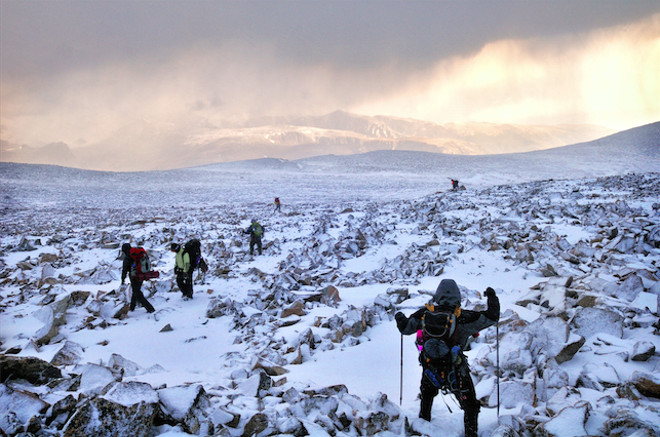
For the Outdoors Issue in this week's paper, we asked a few regional photographers about their work capturing the beauty of the Pacific Northwest. In interviews and emails, they all offered advice and encouragement on how to get the best pictures you can. Most of it comes down to planning, patience and a sense of adventure.
Here's some of the extra tips and photos they had to share.
Jed Conklin
Freelance photographer
Age: 37
Hometown: Spokane, Wash.
Conklin emphasizes the importance of getting out to the hard-to-reach places that make for rare and compelling images. Finding the perfect photo takes a lot of time, patience and dedication, he says. You've got to get you and your gear to the locations where others won't or can't go.
You have to put in the miles.
“There’s a lot of cool places," he says. “You put in your time. You figure it out. It’s just hard work and dedication.”
Conklin says he recently sold photos to National Geographic because he had made the effort to shoot a remote climbing area in Montana. He admits they weren't his greatest photos, but he put himself in a position to have a photo National Geographic ended up needing.
For gear, he suggests keeping things as light as possible. He will often carry a minimal load of two Nikon camera bodies and two lens. When he can he will take along some light-weight off-camera lighting equipment.
“You’re always going extremely light," he says. “You take the bare amount of gear.”
Otherwise, he recommends focusing on your craft instead of your equipment. Buy the best gear you can afford, but it's more important to just get out and make the best photos you can.
Like other outdoor photographers, he stresses the importance of planning your photos around the best possible lighting conditions — the golden hours. In adventure photography, he says that can be especially challenging when trying to summit a mountain or cross a dangerous ridge to get the shot right as the light is changing. Climbers could risk getting stuck in the dark.
"You rarely are climbing at those golden hours," he says. "[But] that’s what separates the lions from the sheep — going that extra mile."
More photos at: jedconklin.com
Heather Biggs
Fine Art Photographer
Age: 30
Hometown: Cheney, Wa
Advice on equipment:
The best equipment out there for photography is given to you at birth. How you see things, and the specific way you look at the world greatly effects the images you produce. I used very entry level Dslr cameras for years, and it wasn't until I went to school that I actually started getting consistent results. Learning how your camera works and what you can do with it, along with some basic editing skills, that is what really makes a difference.
Advice on location:
The easiest advice I can give about finding a great location is as easy as getting lost. Turn off your gps and drive on some old dirt roads for a few hours. The inland northwest is full of so many beautiful landscapes, you don't need to drive far. If you're looking for a specific location try Turnbull Wildlife refuge, Palouse falls, or go for a hike on one of the many trails located in Riverside State Park.
Advice on framing:
How you frame your image really depends on where you're placing your subject and where you want the viewers eyes to be drawn. Remember the rule of thirds, if you're unfamiliar with the rule of thirds Google has some great diagrams to get you started. I try to lead people through my images with things provided in my scene like a road or a fence.
Advice on lighting:
You will hear nature and landscape photographers say they only photograph during the golden hour (early morning or right before sunset.) This is the best lighting but not the only time you can get a great photograph. Chase the sun, look for natural lighting that really brings out the beauty of a location.
Photography philosophy:
Photography is such a therapeutic medium. I photograph because it makes me happy, and opens my eyes to the amazing surroundings that I am lucky enough to live so close to. Everything is beautiful, it just depends on how you look at the world. No matter your reasons for being interested in photography, enjoy yourself, and by all means have fun with it! The best advice I can give is to represent what YOU see with each image. Remember the emotions you felt when you were photographing a specific location and take that with you to the editing room. If you’re a realist and prefer not to do any post production, try to convey how the location made you feel while framing and setting up your shot. Two key words to learn, bracketing and masking. Good luck, and HAVE FUN!
More photos at: heatherbiggsphotography.com or facebook.com/heatherbiggsphotography
Joe Greer
Photographer
Age: 25
Hometown: Inglis, Florida
Advice on equipment:
All of the photographs that I have taken have been with my iPhone 5s. However, I have shot and worked with the Mark II and highly enjoy and recommend this body! I advise everyone to look into getting/renting the Canon 35mm f/1.4 lens as well. These two pieces together blow my mind! But, if you only have an iPhone and do not have the financial flexibility (like myself at the moment) to invest into this equipment then really take advantage of your mobile camera telephone!
Advice on location:
Some of my favorite locations to shoot include: Palouse Falls, Steptoe Butte, Lake Sullivan, any & everywhere in the Cascades. I really enjoy shooting in and around lakes. If you can catch some stillness and good lighting, you're going to be able to create a very powerful Photograph. Take advantage of the beautiful uniqueness of the Pacific Northwest!
Advice on framing:
I use two different methods of framing: 1.) I love to have a healthy balance of landscape and sky in every Photograph. Not over composing with too much sky and a lack of landscape, or vice versa. 2.) I really enjoy photographing people in these powerful outdoor environments, to me people are the heartbeat of photography. So when composing a photograph with someone in these outdoor scenes, I like to remember the rule of thirds. I also, like to create some sort of vantage point. Whether that is climbing on top of my car, getting on my friends shoulders, or climbing a tree, having a vantage point over your subject can add so much more emotion and depth to your photograph.
Advice on lighting:
When I started photography I had no idea how important and how much lighting was a key factor when taking a photograph. Quickly did I learn that lighting could make or break a photograph. I try as much as I can to shoot early in the morning and in the last few hours of the evening. As do many other photographers. Be careful shooting in the middle of the day when the sun is out and blazing, no one likes a washed out photograph! Take advantage of those foggy early mornings. One of my favorite times to go out and shoot!
Photography philosophy:
My philosophy of photography is to shoot what you love. At times I have found the pressure to shoot what everyone else is shooting, because that is what is popular at the time. If you love landscapes, shoot landscapes. Portraits? Shoot portraits. Street photography? Shoot that! Do what you love. Do not be afraid to try new things though. One other thing I try to live by is to have an open heart and mind to learn and be refined as a photographer. I have SO much to learn and never want to have the mentality that I have "finally arrived". Practice and walk in humility when you are behind the lens of your camera.
Some final thoughts that I try to keep at the forefront of my mind is to make it about the people. Be bold and adventures! Get outside! We live in one of the most beautiful parts of the country. So much opportunity to experience and capture the beauty that surrounds us daily.
More photos at: instagram.com/ioegreer Contact at: ioegreer@gmail.com
Chip Phillips
Fine Art Landscape Photographer
Age: 42
Hometown: Redmond, Wash.
Advice on equipment:
I am not much of an equipment junkie, but do feel that it is important to stay updated with new technology. I am finding that It is nice to have larger resolution and sharper lenses as newer stuff comes out. It is also important to have the full focal range covered, preferably from 16-200mm+ with polarizers for every lens. A very stable tripod is absolutely necessary for landscape work, and one of my most important pieces of equipment.
Advice on location:
Photograph locations that you have a personal connection with, abut don’t forget to try new spots as well. Try to research images before hand, this way you can avoid accidentally copying compositions that have already been done.
Advice on framing:
Try not to include everything in the frame. Isolate individual portions of your image, and ask “does this enhance or detract from the image?” I like to walk around an area for quite a while trying different compositions and really getting a feel for the setting.
Advice on lighting:
Shoot during the golden hours, about 1-2 hrs around sunrise and sunset. This is usually when light is at its best. Although, don’t throw out the idea of shooting mid-day if the light isn’t harsh. Blue sky and puffy clouds are great during mid-day down in the Palouse throughout the spring and summer.
Photography philosophy:
I think this quote does a pretty good job of summing it up:
"I went to the woods because I wished to live deliberately, to front only the essential facts of life, and see if I could not learn what it had to teach, and not, when I came to die, discover that I had not lived" — Henry David Thoreau, Walden
Tags: photography , outdoors , Jed Conklin , Heather Biggs , Joe Greer , Chip Phillips , Culture , Outdoors Issue , Arts & Culture , Image
Wednesday, July 2, 2014
Offering 45 free minutes daily, Riverfront Park's new, outdoor wireless Internet service is worth figuring out how to set up. The park launched the new Wi-Fi services, provided by Spokane-based Ptera wireless, in time for last weekend's Hoopfest activities. The initial coverage area stretches in a triangle shape from City Hall east to the corner of the INB Performing Arts Center, and then up to the Pavilion.
After I had gone through the registration process, I was able to walk around the park and even across Spokane Falls Boulevard before losing my connection. Before you can enjoy the new hot spot though, you'll have to go through a little bit of a process. Here's our step-by-step instructions on how to get logged in.
Once "Riverfront Park Free Ptera Wifi" has been selected from your list of Wi-Fi options, the login screen should pop up.
If your Wi-Fi setting is set to auto-login (on iOS), which it probably is, then you'll have to follow the steps shown to turn that off. After that is done, reconnecting should make a new login screen appear:
Scroll down to register through your Facebook, Twitter or email. Once you get to the next screen, you can click "done" in the upper right corner and begin enjoying your 45 minutes of free Wi-Fi. Additional time is available to purchase. We were even able to stream videos via the connection with no problem.
Tags: Culture , For Fun! , Riverfront Park , Arts & Culture , Image
That damn chant.
“I believe that we will win, I believe that we will win, I believe that we will win ...” Over and over.
And the thing is, as a country we did believe it, almost. Because we’re Americans and how often are we the underdogs at anything? Even when our own coach thinks we don’t have a chance, even when one of best strikers Jozy Altidore is out, there was hope we could beat Belgium.
Yesterday at Geno’s restaurant, whole families, bros and people who probably called into work sick all gathered together decked out in red, white and blue to cheer on the home team. With the sun shining brightly, people cheered for every minute. Every time we nearly made a goal there was clapping, every time a call went our way there was hooting, every time goalkeeper Tim Howard deflected the ball — which appeared to be every other second — we shouted in unison. In general, the atmosphere was positive, no hollers about how much Belgium sucked or our distaste for waffles.
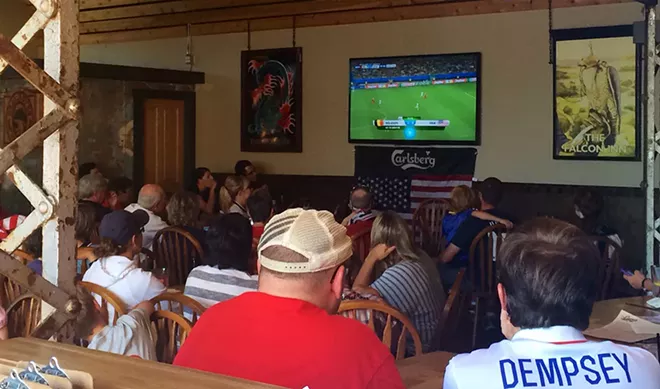
When that second Belgian goal ripped through during overtime, though, things became positively forlorn. No one spoke. Our team came back as 19-year-old Julian Green hammered in one goal, but to no avail.
We lost.
America freaking lost.
But Howard played one heck of a game, so much so he set a World Cup record for the most saves in one game, 16, since the stat has been tracked — this led to the US Secretary of Defense Wikipedia page being changed to Howard’s mug before it was caught. The reaction on Twitter was especially creative. Some amazing tweets included:
@TVMcGee This Howard's End made me more depressed than the Merchant-Ivory version. #WorldCup2014
@fuggirls You can't say we didn't go down swinging. Tim Howard shouldn't have to buy a beer again. EVER. - J #USA
(Inlander’s own) @danieltwalters Expecting this game to look like we barely pulled it out somehow, then Howard's skull is crushed by The Mountain.
@FigDrewton Tim Howard doesn't have Twitter followers because he blocks everyone
My heart still hurts. I wanted us to defeat Belgium so bad. But as the dust settles one day later, the exciting thing here is that after surviving the Group of Death we made the Top 16 in the world, and that is nothing to be embarrassed about. In a World Cup that saw traditional powerhouses like Spain, Italy and England not even clear their groups, we persevered.
Americans don’t care as much about soccer as the rest of the world. When Mexico or Brazil wins a match the entire country takes the next day off due to hangover. It is not ingrained in us. But as ratings for this World Cup have blasted past the homegrown sports TV ratings and as Major League Soccer continues to grow and draw crowds, it appears change is on the horizon.
So who’s still in this?
Brazil, Argentina, Germany (Go Deutschland!) and Costa Rica are who I’m predicting for the Final 4, but absolutely anything can happen. The Top 8 will play Friday and Saturday, and even though USA is out, I bet people will still watch. The final match will be played Sunday, July 13.
Here’s to 2018 and the great Tim Howard!
Tags: Soccer , World Cup , Spokane , Tim Howard , Culture , Sports , Arts & Culture , Image , Video
Tuesday, July 1, 2014
When Hoopfest rolls around each June, there are always two types of “Hoopfesters”—the players and the fans. This year we thought we would offer a different perspective by focusing on Hoopfest street style.
Traditionally, Hoopfest teams of three try to bring their A-game in three categories: athletic skill, team unity and costume. But as the tournament continually grows and changes, so does the costume aspect of the team trifecta.
For the 25th anniversary of Hoopfest, both players and fans were on point with their street style. Most teams went with the sporty versus costume look. There was an abundance of Nike, Under Armour and Adidas apparel.
The overarching trends worn by fans were aviator sunglasses, Strideline socks, as mentioned last week, and summer festival attire similar to Coachella and Lollapalooza. You might even say this year’s street style could be referred to as “Hoopchella.”
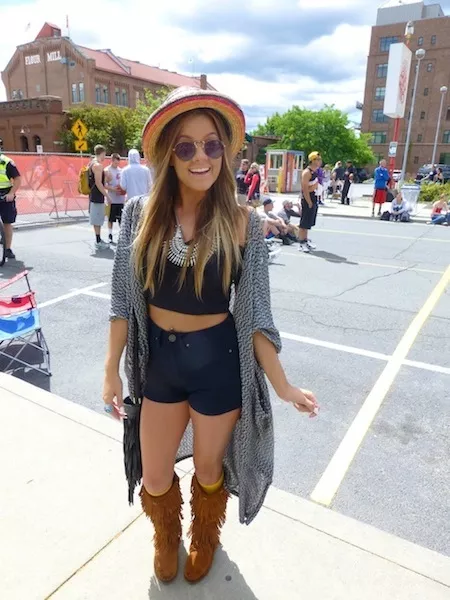
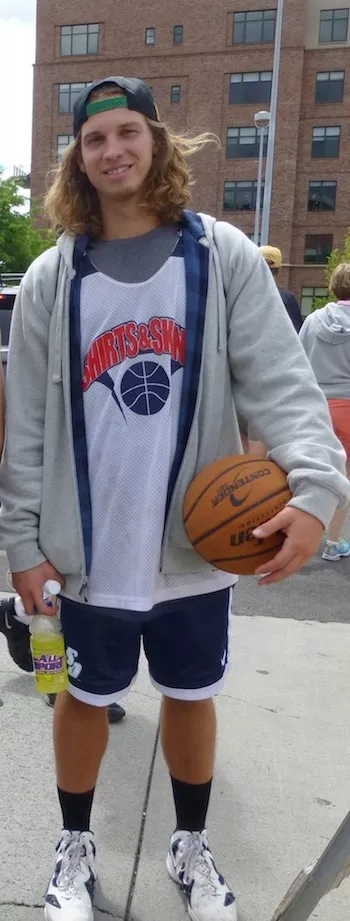
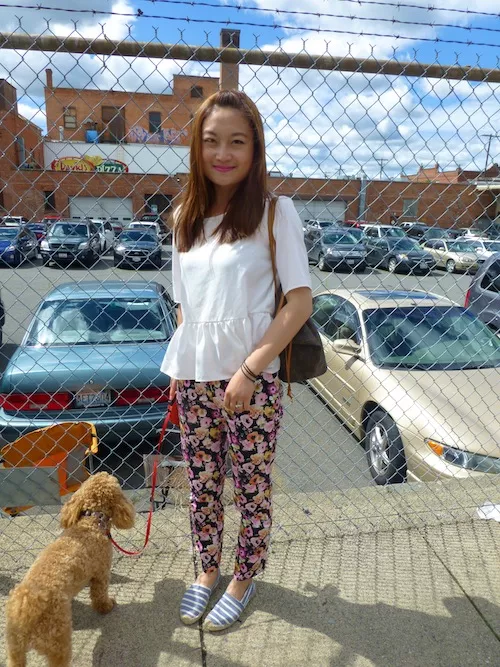
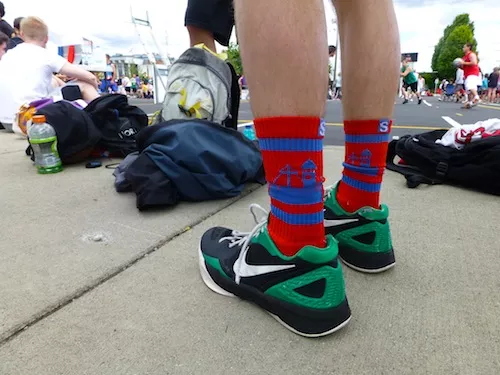

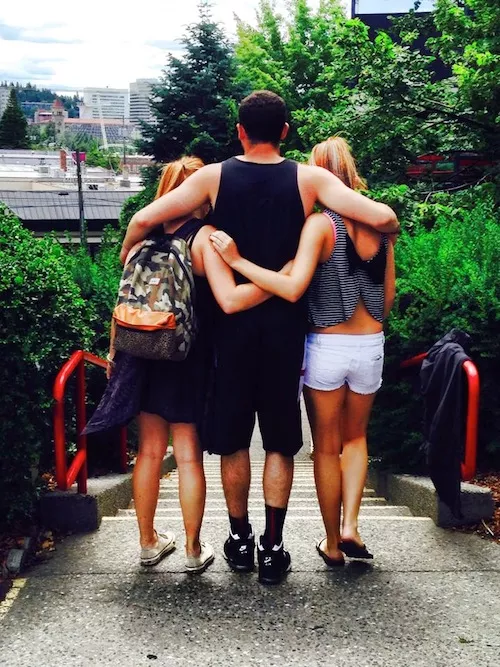
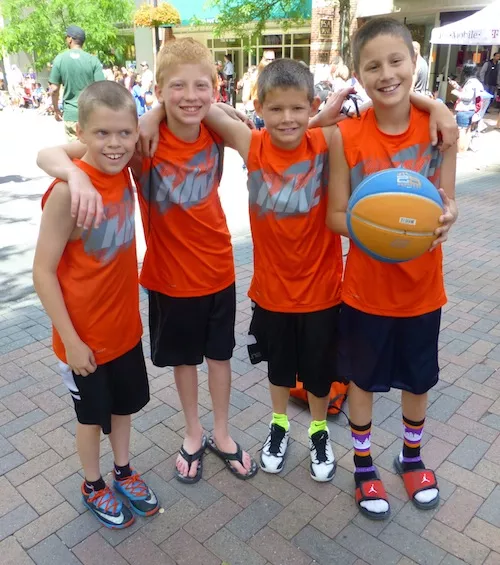
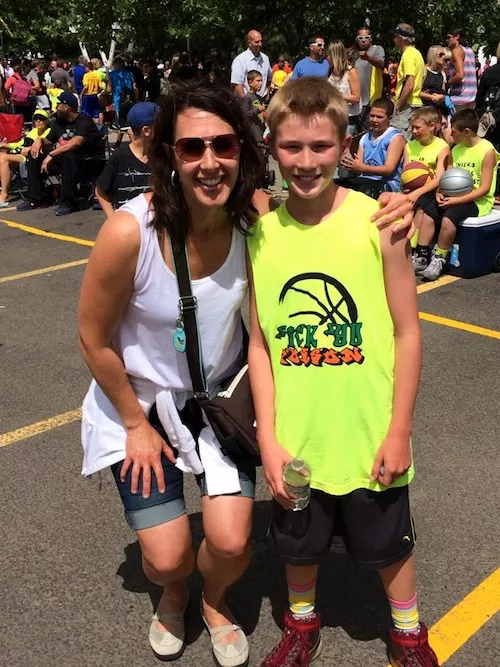

Tags: Culture , Shopping , Spokane fashion , Fashion Watch , Hoopfest , Arts & Culture , Image
Monday, June 30, 2014
Way back in January when it was too cold to care much, we wrote about how letting businesses spill into the sidewalk with sandwich boards, music and patios can make cities more pedestrian-friendly and lively. (And that means safer, too.)
In Spokane, businesses that want to build a café area on the actual sidewalk — as opposed to private property that happens to be outside — must apply for a permit from the city. Among the requirements: The patio must leave at least 6 feet of unobstructed sidewalk, must not block deliveries for adjacent businesses and must be at least four feet from any street trees.
And the city has quite a few new ones this year. Now that we’ve got some summery weather, here’s the list from the city of all businesses newly permitted this year for their inaugural sidewalk café summer:
River Park Square
808 W. Main Ave.
A seating area outside the front entrance of the mall is bordered by new flower planters, and a popular place to pause with an iced coffee.
The Bartlett
228 W. Sprague Ave.
The wood-fenced patio was just constructed in the past week, and nearly doubles the seating capacity of the music venue’s café area.
The Blind Buck
204 N. Division St.
Partially covered by the bar’s awning, the little patio out front on Division is bordered by a tiny ledge just wide enough for your cold drink.
Wild Dawgs
102 N. Howard St.
The patio outside Wild Dawgs, in the shadow of the Parkade, has full-size tables and feels urban without too much traffic.
River City Brewing
121 S. Cedar St.
On the west end of downtown just up the block from Rocket Bakery’s big outdoor seating area, River City’s patio is a good spot for watching the sun set as trains go by.
Wisconsinburger
916 S. Hatch St.
Located in a residential part of the Perry District — the only one on this list outside the downtown core — Wisconsinburger built a wood deck across the full front of the restaurant.
Tags: outdoor dining , patio , Culture , Food , Arts & Culture , Image

